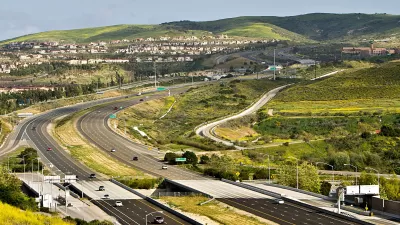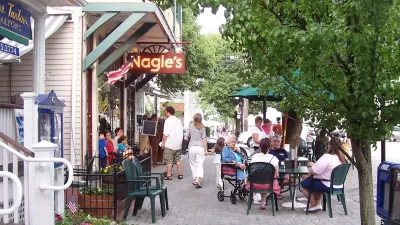Car-Centric Urbanism
Expanding Car-Sharing to New, Car-Centric Markets
Zipcar is a newcomer in Tampa Bay, but the efforts to expand its business in the next few years will provide a case study in how less dense cities can expand alternative transportation options.

Message from 1965: Cars Are Like Frankenstein's Monster
We've known for some time that it would be difficult to rein in the automobile once the country's obsession had taken hold. Footage from a news special aired in 1965 offers historic perspective.

A Pedestrian's Perspective on Sprawling Orange County
Southern California's Orange County isn't exactly known for its walkability. Frank H. Wu decided to test that notion on a recent carless visit.
Toronto to Narrow its Traffic Lanes
Toronto will begin rolling out a program to narrow traffic lanes on the city's streets. The new lane policy, recently completed, was in the works for the past year.

Traffic Safety Silver Bullet: Prohibit the 12-Foot Traffic Lane
Jeff Speck, author of Walkable City, argues that reducing the width of traffic lanes would be a panacea for the disastrous public health outcomes of traffic safety.
Review: New Oakland Hospital a Case Study in Urban Design Failure
John King describes a new, 7.6-acre hospital campus in the heart of Oakland, California as accessible only by car or ambulance—in other words, "enough to make you sick."

Thriving in the New Zombie Future: Business as Usual Planning for the Zombie Apocalypse
A satirical post welcomes the metaphorical zombie state experienced by humans in the modern built environment as the path of least resistance for a literal, future zombie state.
These Cartoons About Car Culture Are No Joke
Andy Singer is an alternative transportation advocate that uses cartoons, rather than written diatribes or combative slideshows, to argue against America's auto-oriented environments and policies.
Driverless Cars Steer Us Away From a Carless Future
Discussions over the potential benefits and drawbacks of driverless cars seemingly overlook one important question, says Allison Arieff: "[W]hy continue to design and plan for a car-based society?"

Why Don't We Allow Designers to Create Cites for People?
Cars kill us and drive us crazy; while walking and biking improve our mental and physical health. So why do we design our cities for cars, asks Jeffrey Tumlin.
How Will Bike-Centric Urbanism Reshape Our Cities?
For the past half-century, the automobile has played a profound role in shaping the form of our cities and suburbs. A new book examines the effects cycle-centric planning will have on the built environment.
Pagination
Urban Design for Planners 1: Software Tools
This six-course series explores essential urban design concepts using open source software and equips planners with the tools they need to participate fully in the urban design process.
Planning for Universal Design
Learn the tools for implementing Universal Design in planning regulations.
Clanton & Associates, Inc.
Jessamine County Fiscal Court
Institute for Housing and Urban Development Studies (IHS)
City of Grandview
Harvard GSD Executive Education
Toledo-Lucas County Plan Commissions
Salt Lake City
NYU Wagner Graduate School of Public Service


































